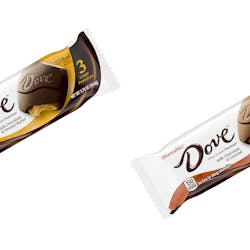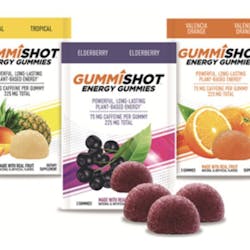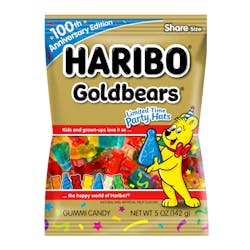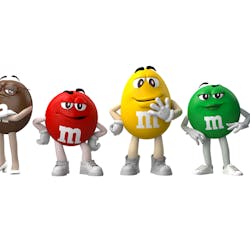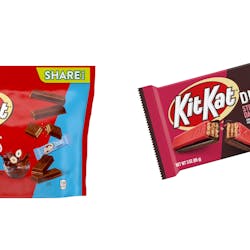Time-crunched Americans looking for healthy, good tasting snacks, combined with a growing obesity epidemic, have created a demand for healthier snack options. In an attempt to help Americans choose healthier snacks, product manufacturers have either reformulated or introduced new “healthier” products.
The products that have been introduced to meet this demand have had varying degrees of success, which explains why some vending operators who have used them have experienced varying degrees of success selling them.
One problem that confronts vending operators, retailers and manufacturers in addressing this market is a poor understanding of what defines a “healthy” product. If the product does not meet what the consumer deems healthy, the product will not sell.
Most often, snacks and chips have been reformulated to offer lower calories, saturated and trans fat, and/or salt. For instance, baked chips have been offered instead of a regular, full-fat chip.
Over the past decade, nutrition experts have recognized that consumers are missing out on essential nutrients during the day. The “Dietary Guidelines for Americans” provides science-based recommendations to encourage health and to reduce the risk of chronic diseases through diet and physical activity.
One key dietary recommendation is to consume a variety of nutrient-dense foods and beverages. Another recommendation is to choose foods that limit the intake
of saturated and trans fats, added sugars, and salt.
NUTRIENT-DENSE SNACKS: A CONTRADICTION IN TERMS?
Nutrient-dense foods are found naturally within the food groups: meats, dairy, whole grains, and fruits and vegetables. Nutrient-dense foods provide significant amounts of vitamins and minerals with relatively few calories. Snack foods, unlike naturally nutrient rich foods, contribute calories, but not as many nutrients.
Kids and adults snack three to four times a day,
and often a quick snack substitutes for a meal, especially breakfast. Studies have shown that as snacking increases, important nutrients are missed in the diet, which has contributed to the nutritional shortfall over the past decade.
How can kids and adults get essential nutrients that are missing to fill their nutritional gap throughout the day?
Snacks offered in vending machines can be a convenient solution for quick, healthy pick-me-ups and at the same time can improve the nutritional quality of consumers’ diets.
Vending machines aren’t devoid of healthy options
The variety of foods from which to choose in vending machines is unique. Some healthy options that are often included in vending are low-fat milk, yogurt, trail mix, and whole grain crackers.
Vending operators are looking for healthier packaged snack options to fulfill a need in today’s market as more customers desire a quick, healthy snack as an alternative to the usual snacks found in vending machines. Vendors can position themselves as healthy snack providers by utilizing a Web-based computer software program — Snackwise® — that evaluates snacks according to their nutrient density.
Vendors can help their customers fill that nutritional gap by offering healthy nutrient dense packaged snacks.
SNACKWISE® NUTRITION RATING SYSTEM EMERGES
In 2004, doctors and dietitians at The Center for Healthy Weight and Nutrition at Nationwide Children’s Hospital in Columbus, Ohio developed the Snackwise® nutrition rating system. The rating system evaluates nutritional quality of snack foods based on their nutrient density.
The purpose of Snackwise® is to provide an easy method to evaluate the nutrient density of snacks based on nutrients commonly found on the nutrition facts label. Originally, Snackwise® measured 10 nutrition parameters: calories, total and saturated fats, fiber, sugar, protein, calcium, iron, and vitamin A and C. Sodium was later added, creating 11 nutritional parameters by which Snackwise® evaluates nutrient density.
2005 DIETARY GUIDELINES PROVIDE BASIS OF PROGRAM
The chart on this page lists the guidelines for the 11 parameters as set forth by recommendations of the 2005 Dietary Guidelines for Americans from the U.S. Departments of Agriculture and Health and Human Services.
The Snackwise® research team developed an algorithm (problem solving procedure) that awards or subtracts points based on how each nutritional parameter of a snack food contributes to nutrient density and recommendations of the 2005 Dietary Guidelines for Americans.
The computer software evaluates the nutrient density, and then rates the snack as red, yellow, and green.
Red items are nutrient poor and should be chosen rarely.
Yellow items have average nutrient density and can be chosen occasionally.
Green items are nutrient dense and are the best choice.
Snackwise® was designed as a Web-based, user-friendly system. Many popular snack foods are included in the Snackwise® database and can be accessed by entering the UPC codes. However, new items can also be added by entering basic information from the nutrition facts label of a favorite snack.
SNACKWISE®: A USER FRIENDLY SYSTEM
Snackwise® distinguishes itself from other programs because it offers an easy-to-use, validated calculator, which is accessible to buyers, parents, teachers, students, and other consumers via the Snackwise® Website, www.snackwise.org.
Snackwise® also differs from other nutrient rating systems because it accounts for the overall nutrient density of the item rather than focusing on specific nutrients.
Snackwise® offers vending operators an opportunity to capitalize on an increasingly health conscious public by offering healthy products to consumers in a variety of different settings.
When designing a healthy vending machine planogram, it is important to use the Snackwise® program when purchasing items and when placing them throughout the machines. When choosing items to stock in machines, Snackwise® recommends vendors develop a ratio for each category of snack food.
For example, 30 percent green, 55 percent yellow and 15 percent red.
STRATEGIC PRODUCT PLACEMENT IN MACHINE
When determining placement of items throughout the machine, it is also helpful to use the coding system. Strategically placing green items at eye level is a way to guide consumers to choose healthier snacks.
The increase in healthy options does not necessitate vendors remove all less healthy items from their machines.
The National Automatic Merchandising Association (NAMA) estimates that most children purchase less than one candy bar or salted product from vending machines per week. Offering smaller portions is one way to monitor children’s intake of these types of products. So in addition to healthy snacks, vending machines offer the option for a sweet treat.
HOW TO PROMOTE HEALTHY SNACKS IN VENDING
Some suggestions to promote healthy snack choices include:
- Increase the number of healthy snack choices available in vending machines. Use the recommended ratio of 30 percent green, 55 percent yellow, and 15 percent red.
- Display Snackwise® posters at the point of purchase.
- Offering samples of new healthy snack choices.
- Offer only single- or regular-size portions of snacks.
- Use competitive pricing strategies. Set prices
for healthier snack foods below the less healthy
alternatives. - Get the word out! Use the Snackwise® promotional material to advertise healthy vending.
AN IMPLEMENTATION SUCCESS STORY
Students and administrators at Bowling Green
High School in Bowling Green, Ohio implemented the Snackwise® program in a effort to help students learn marketing and management skills as well as improve their health. Promotional activities included posters, prizes, display cases, public address announcements, and print and visual media.
Through the implementation of Snackwise®, 56 percent of students made healthier snack choices because they wanted the healthier snack, 64 percent noticed stickers on the food items, and 42 percent noticed the Snackwise® food display in the school. Overall, the school found that after the implementation of Snackwise®, the nutrition of their students improved.
ONE SCHOOL DISTRICT PROMOTED THE PROGRAM
The Westerville City School District in Westerville, Ohio, including 16 elementary schools, four middle schools, and three high schools has seen many benefits from its implementation of Snackwise® in 2007. Posters hung beside vending machines explained the differences between the green, yellow, and red foods and teachers implemented nutrition and healthy lifestyle education into their curriculum to further encourage healthy eating.
At the end of the school year, Cardinal Vending, the Columbus, Ohio-based vending company contracted to supply Westerville’s vending machines, reported a 2 percent increase in sales in the schools.
Cardinal Vending services more than 25,000 students across 16 school districts throughout central Ohio. The company has successfully implemented the Snackwise® program in all school-based accounts, and has found the biggest challenge to implementing the program is sourcing vend-size healthy snack products.
VENDING OPERATOR FINDS KIDS RECEPTIVE TO NUTRITION
“I’m surprised at how educated kids are today,” noted Ann Oliver, vice president of marketing for Cardinal Vending. “They’re not going to boycott the machine just because it doesn’t have a (candy) bar.”
Oliver thinks product manufacturers are making more nutritional products available in single-serve sizes, but more variety is still needed.
“Manufacturers are doing more to provide convenient, snack-sized healthy options, but many are not compatible with our 12-select, chilled candy or 15-select chip vend machine,” said Oliver.
Meanwhile, the Ohio State University has teamed up with AVI Foodsystems, Inc., based in Warren, Ohio, to implement Snackwise® in all vending machines across campus. The university will be conducting research to determine the market appeal of changing the vending selections.
AVI has agreed to partner with the university to determine if Snackwise® is an effective model in helping students make healthier snack selections.
For more information concerning promotional activities and project successes, visit the Snackwise® Website at www.Snackwise.org, and click on “Resources and Snackwise® Implementation Success Story.”
The obesity challenge confronting the country has been many years in the making and nutritionists are only beginning to find ways to encourage consumers to make healthy choices. The vending industry can help consumers make healthy choices by partnering with a nutrition information resource.

